“White onions,” “red onions,” and “yellow onions” are regular onion colors you’d see while shopping in local markets or online grocery stores like PricePally. Like many vegetables, onions come in different shapes, sizes, and colors with distinct flavors for specific dishes. Given the varieties, it’s easy to not know your onions (pun intended). But in this piece, you’ll learn how to use onions to prepare Nigerian delicacies.
Key takeaways:
- Mature onions come in red, white, and yellow (light or golden brown) colors.
- Scallions, green onions, and spring onions are immature onions with a mild flavor compared with mature onions.
- Although shallots look like onions, they’re not. They have an “oniony with a hint of garlic” flavor.
3 nutritional benefits of onions
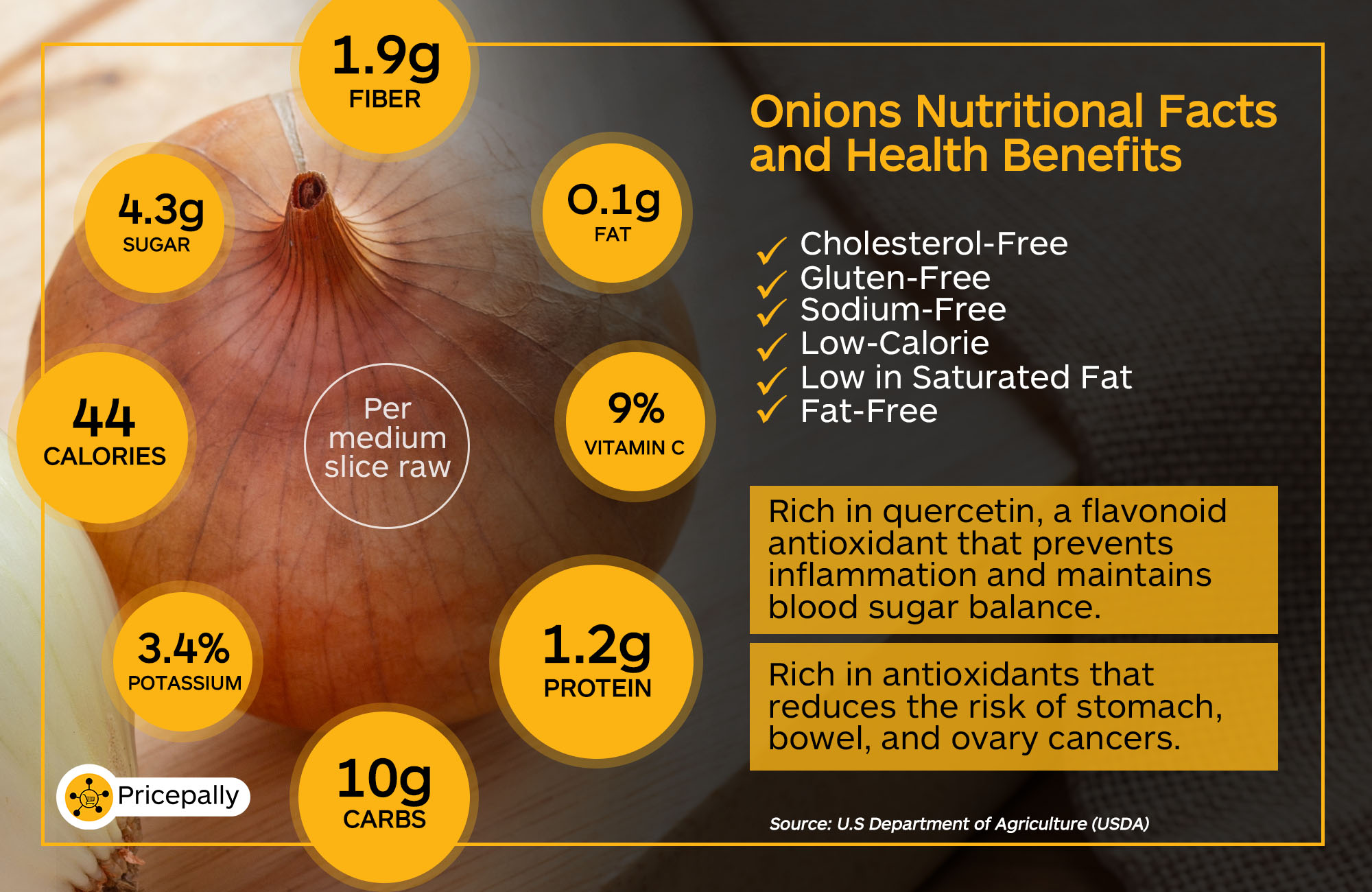
Onions are bulb-shaped, low-calorie vegetables that grow underground. Nutritionally, onions are rich in water, carbohydrates, and fiber, with protein, vitamins, and fat available in traces. They also contain plant compounds (e.g., anthocyanins, quercetin, and sulfur compounds). But how do these nutrients benefit you? Find out below.
1. It boosts the immune system
The high presence of vitamin C and bioactive compounds like quercetin make onions a potent force for building body immunity. Both nutrients prevent cell damage and increase iron absorption, which helps the body fight against fatigue, dizziness, headaches, and sensitivity to cold.
2. It reduces the risk of chronic diseases
The essential nutrients in onions significantly reduce the risk of developing chronic diseases like type 2 diabetes, cancer, and heart-related diseases.
Quercetin—the antioxidant flavonoid in onions—prevents inflammation, lowers high blood pressure, and maintains blood sugar balance, reducing the risk of hypertension. Similarly, onions (especially red onions) are rich stores of anthocyanins—the plant pigment that guides against type 2 diabetes and lowers the risk of heart disease.
Onions also offer moderate protection against cancers related to the stomach, bowel, and ovary. Flavonoids and other organo-sulfur compounds are responsible for the anti-cancer behavior. That explains why people who eat a lot of onions are 79% less likely to develop bowel (or colorectal) cancer than those who don’t.
3. It improves gut health
The gastrointestinal system (or gut) is responsible for food ingestion and digestion, nutrient absorption, and waste product removal from the body.
Gut health depends on its microbiomes (microscopic living things such as bacteria, viruses, and fungi in the gut). Onions are good sources of fiber and prebiotics—two nutrients that nourish gut microbiomes for improved digestion and enhanced immunity. The healthier the microbiome, the better your gut health.
4 Types of onions in Nigeria
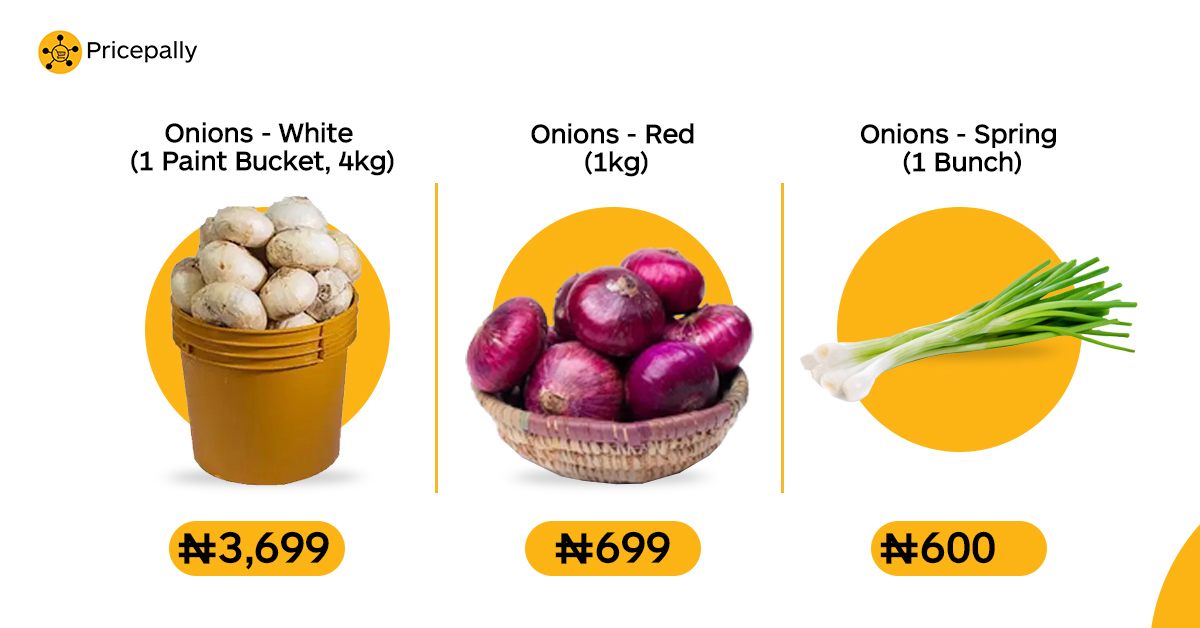
The age of onions influences their taste and culinary uses. Broadly, you can eat onions after their bulbs have reached full size (i.e., mature) and when immature with fleshy scales. Immature onions typically have a sharper flavor and milder pungency than mature onions.
The table below shows examples of mature and immature onions in Nigeria.
|
Mature onions |
Immature onions |
|
red |
scallions |
|
yellow |
green |
|
white |
spring |
Onion colors: How to spice different types of onions in Nigeria
1. Red onions
Red onions are arguably the most abundant onion in Nigeria. Their bright red hue makes them stand out on market counters and in food. It has a sharp, almost spicy flavor with a natural sweetness. The onion flavor diminishes when cooked.
The vibrant color and mild spice of red onions make them ideal for raw or cold delicacies and the following dishes:
- abacha (African salad)
- fried pepper sauce (ata didin in Yoruba)
- pepper-tomato stew
- suya (grilled meat)
Cooking tip: soak red onions in cold water for 10–15 minutes to reduce their intense flavor.
2. White onions
It has a white or ivory color without the customary sharp bite. Unlike the red and yellow families, white onions contain low sulfur and a high sugar content, making them so sweet you could eat them raw. As a result, they don’t sting your eyes when you peel them, unlike red onions.

Their sweet taste makes them excellent for the foods below:
- salad
- jollof rice
- fried rice
- salsa
- sandwiches
3. Yellow onions (aka brown onions)
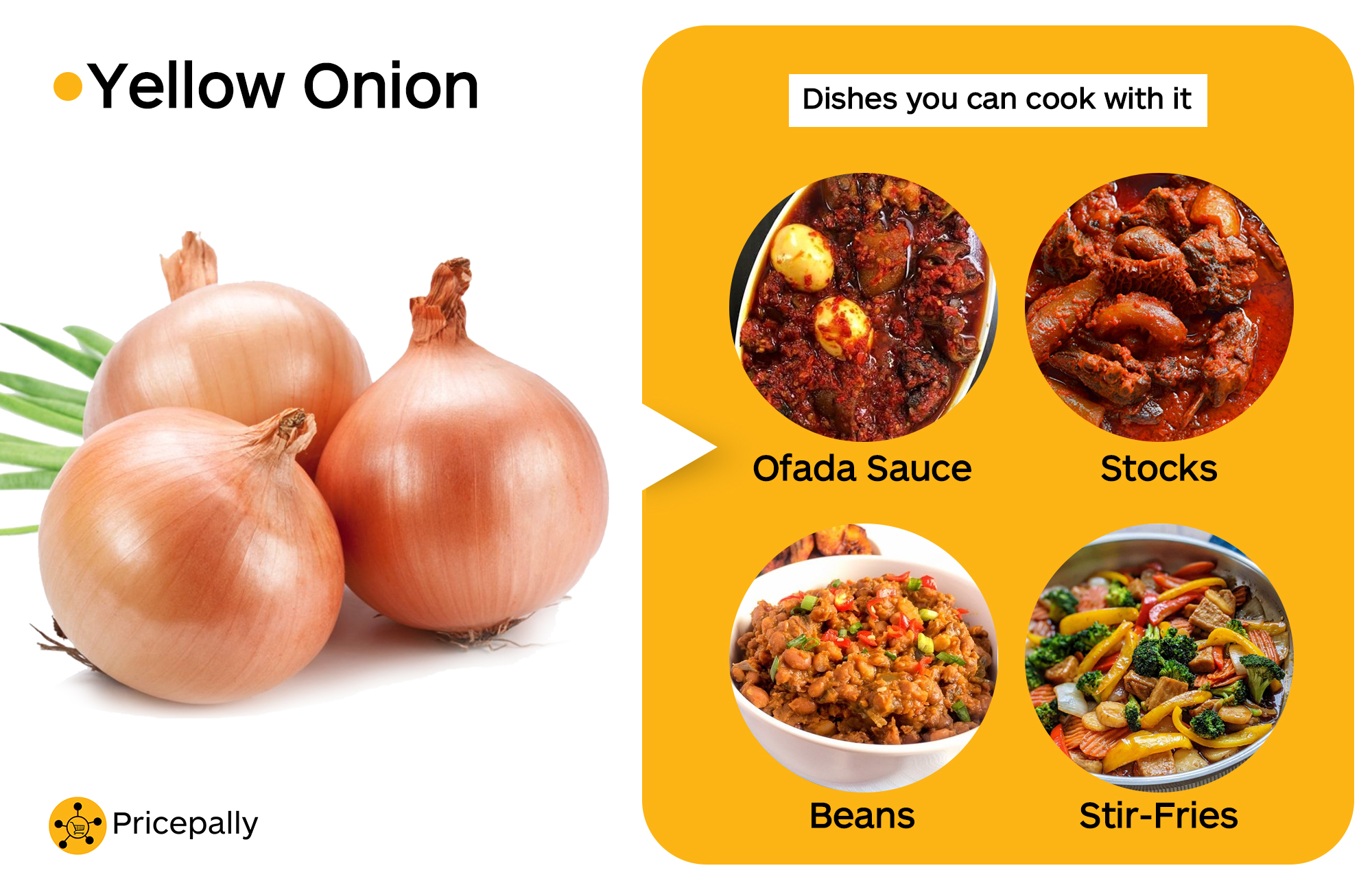
Their color ranges from light yellow to golden brown. Yellow onions have a moderately sharp taste and sweetness that intensify when cooked. Its subtle earthly taste adds to its mildly sweet flavor profile.
The natural flavor is spicy and overwhelming; therefore, avoid them for raw dishes. Don’t eat them raw, either. Instead, use them as a base ingredient for stir-fries, stews and sauces (e.g., ofada), stocks (especially meat stock), and meals with long cooking times.
Cooking tip: Yellow onions are “all-purpose.” They’re safe alternatives when you’re unsure about the onion you need for recipes.
4. Immature onions: spring onions, green onions, and scallions
Spring onions, green onions, and scallions are immature onions with edible leaves and bulbs. The three immature onions are used interchangeably in some regions, partially because their flavor profile and physical appearance are similar.
Unlike mature onions, immature onions have a subtle sweetness, a garlic-like taste, and a green flavor with hints of onion pungency. They also add a fresh, grassy taste and lift to your food, especially when used raw.
Their flavor profile makes them excellent for the following Nigerian dishes:
- stir-fries
- vegetable salad and African salad (Abacha)
- pepper salad
- fried rice
- Jollof rice
- stews
Shopping tip: Limited Chinese fried rice recipe bundles are available on PricePally. The bundle contains cooking instructions and ingredients (including spring onions) for preparing Chinese fried rice and beef stir-fry.
What’s the difference between spring onions, green onions, and scallions?
Spring onions are the most mature and have the strongest flavor among the three young onions. However, immature onions have a gentler flavor than mature onions.
The more time onions spend on the ground, the bigger their white bulbs. Scallions spend the least time underground. As a result, they have white roots instead of bulbs and are younger than spring onions and green onions. In contrast, green onions have a medium-sized white, ovular bulb, while spring onions have a big, round bulb.
What about shallots?
Shallots are related to garlic and onions. They’re small (around the size of a golf ball) with elongated bulbs and grayish-brown skin. In contrast, onions—especially when mature—have large, round bulbs.
Shallot has an “oniony with a hint of garlic” flavor stronger than onions. They’re peppery when raw, but the sweetness grows after cooking, and are easier to peel than onions. Shallots are best used for salads, sauces, stir-fries, and garnishes.
FAQs about types of onions in Nigeria
What’s the best way to store onions?
Follow the tips below to preserve the shelf-life of mature onions.
Store in cool, dark, well-ventilated places without access to direct sunlight or heat sources.
- Put them in a ventilated mesh bag or basket that allows proper air circulation to prevent moisture buildup and rot.
- Separate them from other ethylene-sensitive foods (e.g., sweet potatoes). Onions, especially red onions, emit ethylene (the plant compound that hastens food ripening). Learn more about ethylene and how it affects perishable foods here.
- Store cut onions in airtight containers before putting them in a refrigerator. The airtight bag prevents the onions from drying out because of odor absorption.
Immature onions have a shorter shelf-life than mature onions. Use the preservation tips below to extend the kitchen life of immature onions.
- For short-term storage, remove any debris from the onions.
- Cut the root.
- Cut the spring onions in half to fit a plastic bag.
- Remove any excess water from the body using a paper towel.
- Wrap them in a paper towel once they’re dry.
- Place them in a paper bag and refrigerate.
Alternatively, you can stand spring onions upright in a glass of cold water. But you have to replace the water every day. This method will help you regrow more spring onions. Mature onions (e.g., red, white, and yellow) cause immature onions to wilt because they produce ripening gases; therefore, don’t store them together.
What are the best onions for sandwiches?
The flavor you want dictates the onions you should use for sandwiches. Here are the onion options you can explore for your sandwiches.
- Red onions bring a mild oniony spice and flavor that doesn’t overwhelm other ingredients. They’re also ideal for cold meals and toppings.
- Yellow onions add moderate sharpeners and sweetness.
- White onions offer more sweetness and a less sharp, oniony bite.

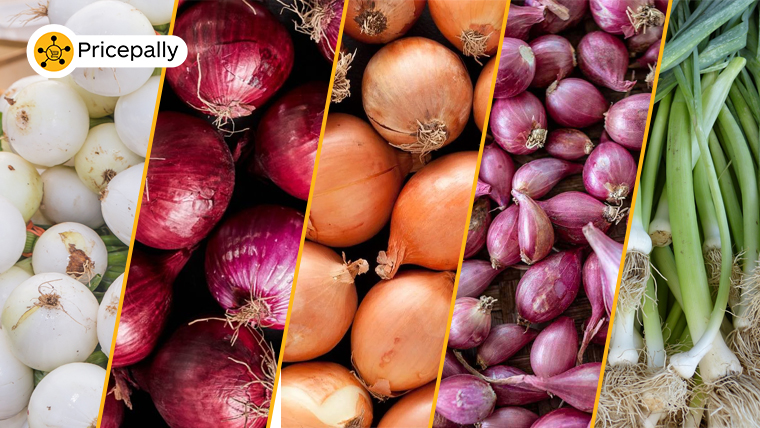
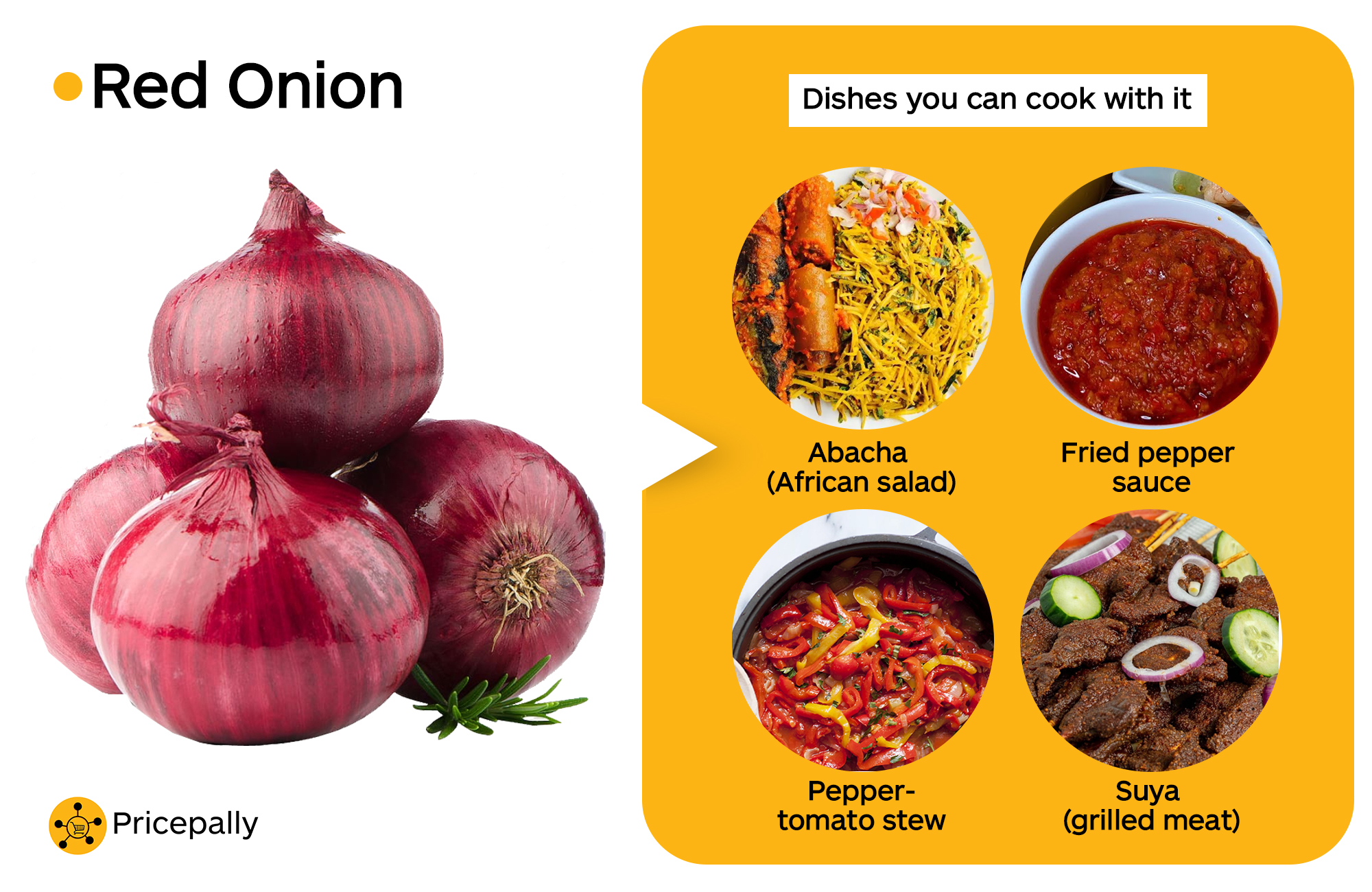
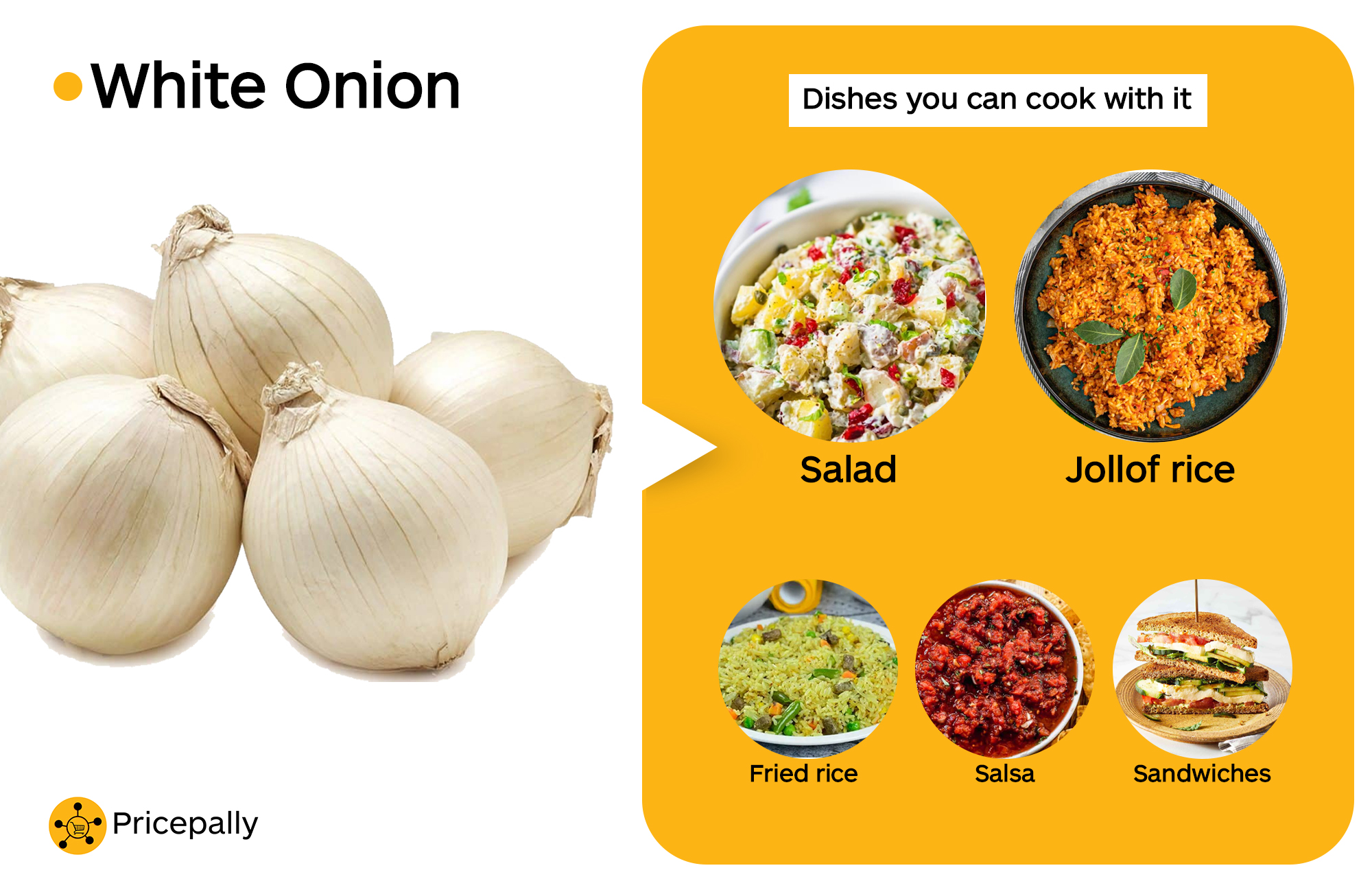
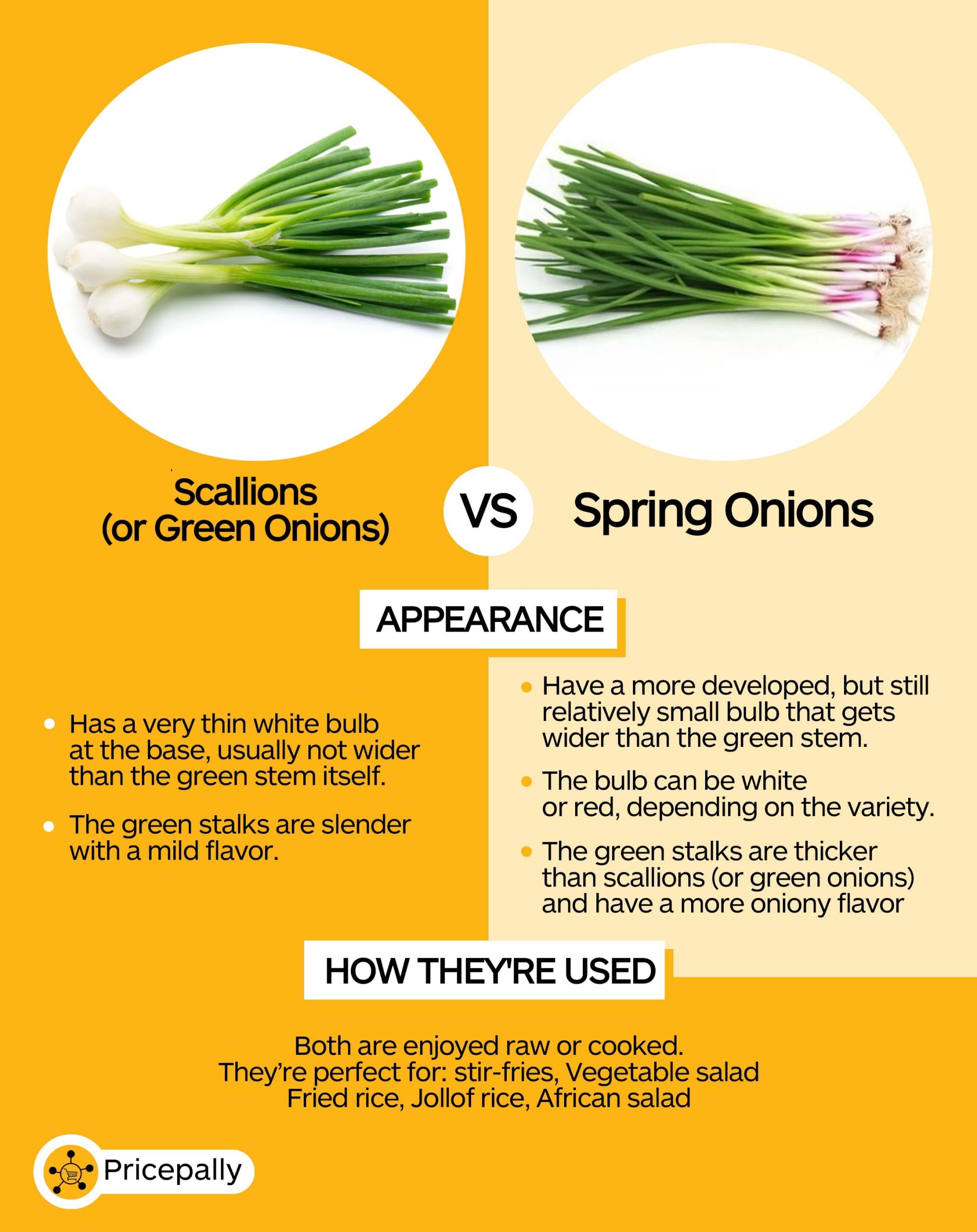
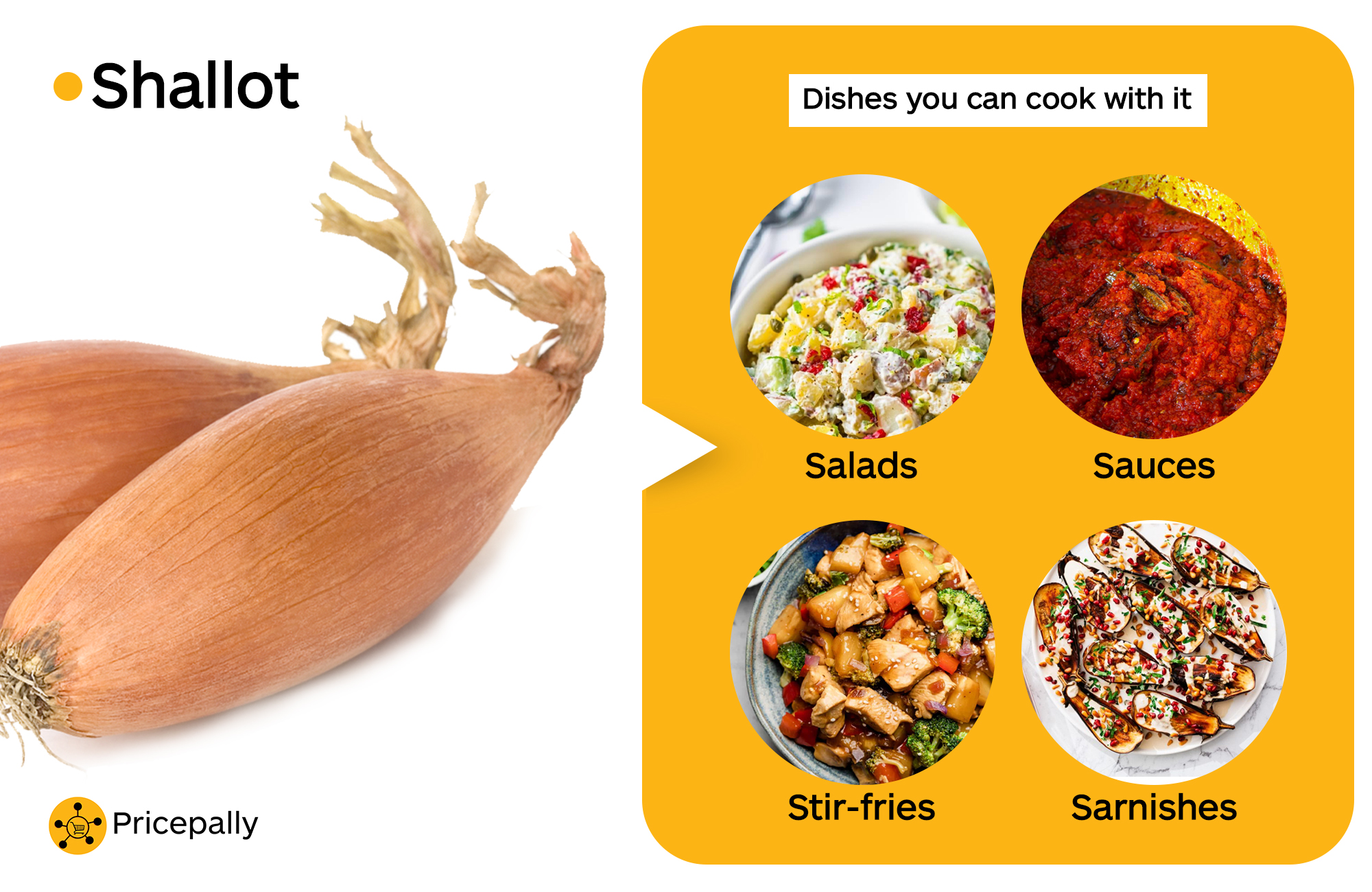

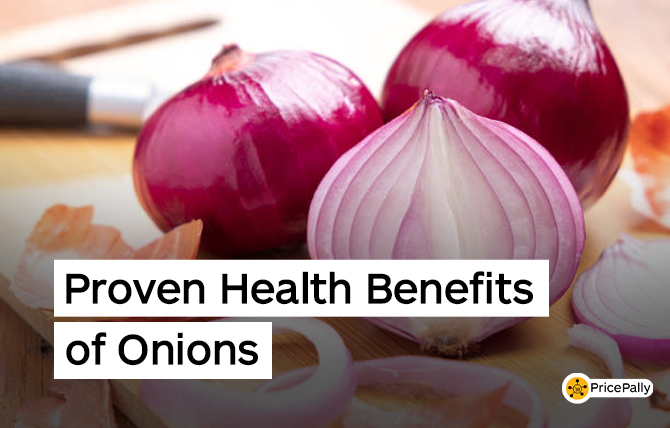




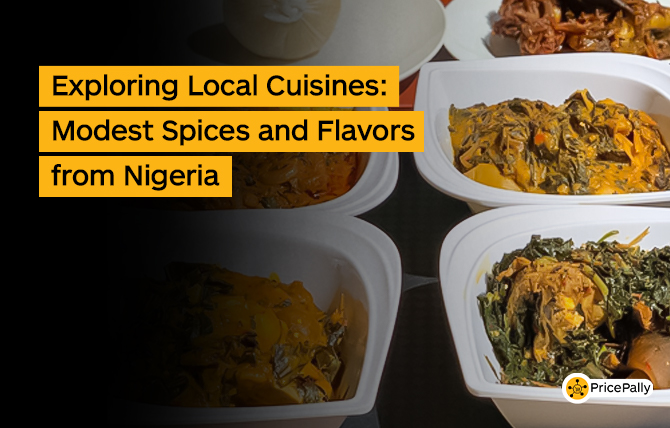
How Pricepally is reinventing Bulk buying Fresh-farm foods in Nigeria.
PRICEPALLY FOOD PRICE INDEX
WORLD EARTH DAY 2021
Will Standardized Food measurement become widely adopted in Nigeria?
Bulk Food Supply for Businesses: How PricePally’s Loyalty Rewards Program Helps You Save More and Grow
PricePally PriceLock FAQs: How to Beat December Food Inflation in Nigeria
Exploring Okro: Benefits, Meal Ideas, and Okra Water
PricePally Partners with Power Oil to Launch Health & Wellness Campaign for Nigerian Shoppers